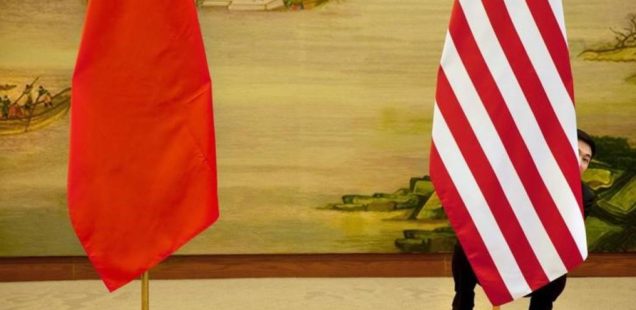
Can Trump Clean Up the Mess Obama Made of Asia Policy?
Donald Trump has Beijing’s attention now that he questions the “One China” policy on Taiwan. But here’s the question for the President-elect and his foreign policy advisers: Are you paying attention to the shifting balance of power in the Pacific that accelerates as we speak?
To put the conclusion first, it looks as if Trump’s rehearsing to play Nero as Rome burns, while those advising him on Asia policy remain lost in a fog of nostalgia. Nobody in Trump’s camp has said anything so far about China’s ever-swifter accumulation of influence as a Pacific power—even among U.S. allies. Not a word about Russia’s warming relations in the region—a new and not inconsequential part of the picture.
Related: Trump Will Be Steadier on China Than His Taiwan Call May Suggest
Nature abhors a vacuum. The outgoing Obama administration couldn’t have done a better job flubbing the American position in Asia, and this is a reality Trump doesn’t seem to be facing squarely.
Trump can wonder aloud about adhering to “One China” all he wants, and he can complain about exchange rates, Chinese exports, and lost jobs. But this is just grandstanding intended to impress the folks back home.
Nobody’s going to abrogate “One China,” the bedrock of Sino–American relations; economic ties are far more to mutual benefit than to China’s one-sided advantage—as Trump ought to know.
Looking tough might’ve worked well on the campaign trail. Looking smart will be essential come January 20 if Trump is to avoid worsening the problems Obama’s about to hand him.
Related: Trump’s Vow to Abandon the TPP Hands China a Huge Victory
Obama’s “pivot to Asia,” incessantly touted for years, is a bust. It’s encouraging that Trump is not even nodding to the notion, but that doesn’t suggest a new China policy.
The Trans–Pacific Partnership was ill-conceived from the first. Pointedly excluding China, Obama and his people always considered the TTP more a strategic tool than an economic alliance.
A little more than a year ago, when the U.S. and 11 other Pacific nations celebrated the conclusion of the deal, Beijing let it be known it was launching an alternative, the Regional Comprehensive Economic Partnership.
Now, Trump is going to kill the TTP, while the RCEP boasts 16 members, including longtime American allies such as Australia and New Zealand, Malaysia, Singapore, and the Philippines; in October members completed their 16th round of negotiations.
Related: As Trump Gets Tough With China, Facebook Plays Their Game
Obama and his Secretary of State, Hillary Clinton, thought they could divide Asia in us-against-them fashion and isolate China. It was sheer hubris, but what’s done is done.
There are plenty of reasons to put the TTP out of its misery, but nickel-and-diming Beijing—especially about non-issues such as currency rates—doesn’t come close to filling the hole Obama and Clinton dug in our Asia policy.
Russia complicates this picture. It has long been customary to scoff at Moscow’s version of a multilateral alliance, the Eurasian Economic Union, but the EAEU is now in free-trade talks with dozens of nations, including the same U.S. allies in Asia that are joining the RCEP.
And here’s a big one: Vladimir Putin finished two days of talks with Japanese Prime Minister Shinzo Abe in Tokyo on Friday. While there was no breakthrough on a territorial dispute that dates to World War II, the Russian leader went home with promises of new economic cooperation, and some modest deals were sealed; most important, in signaling friendlier ties with Moscow Abe said “No” to the Russophobia now reigning in Washington.
Related: Chinese Trade Data Shows Signs of Industrial Recovery
No comment from the Trump camp. You start to get the uneasy feeling that there’s not a lot of room for complexity in the president-elect’s worldview.
And Asia’s no less complicated on the security side.
Last week a Chinese naval vessel picked up an underwater drone the U.S. Navy had deployed in the South China Sea. By the weekend the Chinese Defense Ministry agreed to return the device, but by then a minor incident had taken on disproportionate symbolic significance.
China’s claim that it was inspecting unidentified equipment may or may not be true. But what was to be gained when the Pentagon shouted about “unlawful seizure,” giving Beijing an opening to complain Washington was “hyping up” the incident?
Trump fell into the same trap, tweeting that taking possession of U.S. property was “unpresidented”—a malapropism that deserves to stand uncorrected.
Related: U.S. Says ‘One China’ Policy Should Not Be Used As Bargaining Chip
Raising the decibels over who polices the South China Sea has been another feature of the famous “pivot”—and another mistake. While allies in the region are fine with the U.S. presence, no one buys into the Obama–Clinton idea that there’s a black-or-white choice to be made between Beijing and Washington.
The worst of the resulting mess is now plain in U.S. relations with the Philippines. Beefing about President Rodrigo Duterte’s anti-drug campaign betrays a serious lack of proportion in Obama’s State Department. It’s gruesome, but that’s the business of Filipinos, not Americans.
Now it’s bad to worse. Last week a U.S aid agency announced it is withholding $450 million in promised anti-poverty aid in response to Duterte’s campaign.
It’s now half a century since Sukarno, Indonesia’s charismatic president, directed his famous blast at Washington: “Go to hell with your foreign aid.” On Saturday, Duterte said the same thing in milder language—while advising the Pentagon to begin packing its bags.
No incoming president would have an easy time cleaning up Asia policy after all the Obama administration’s misjudgments. Will Donald Trump recognize the challenge and meet it? Neither is clear, though the outlook is not bright.

